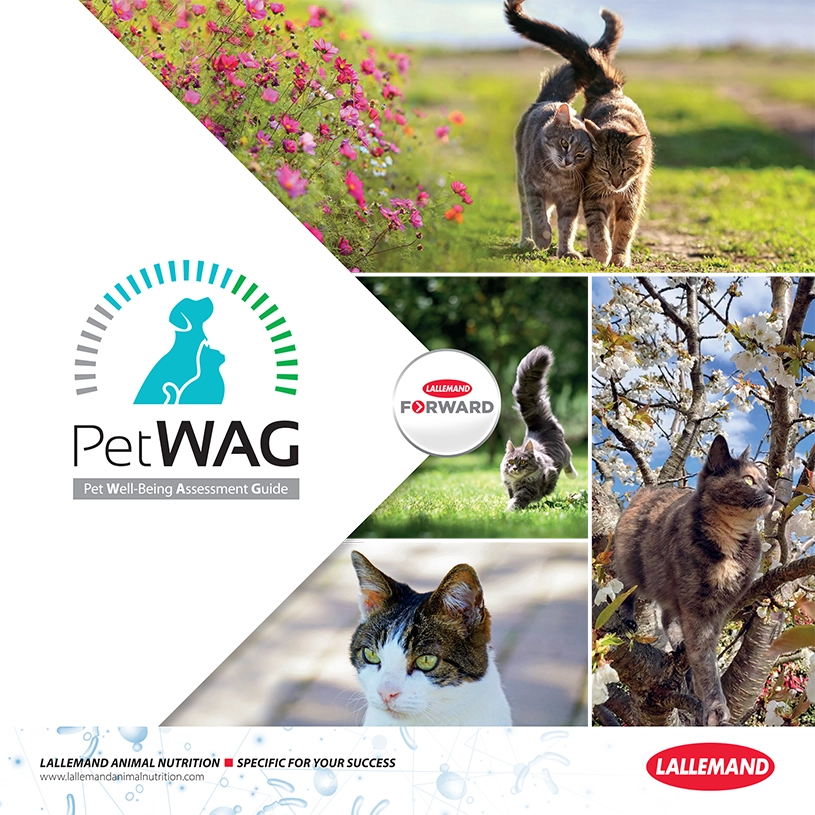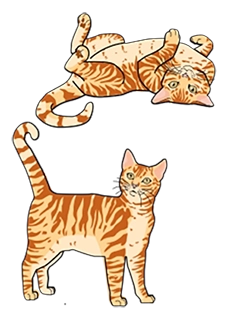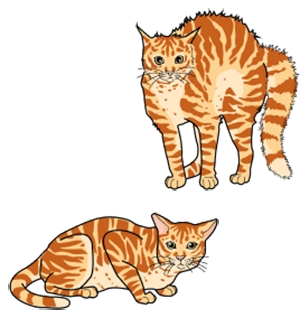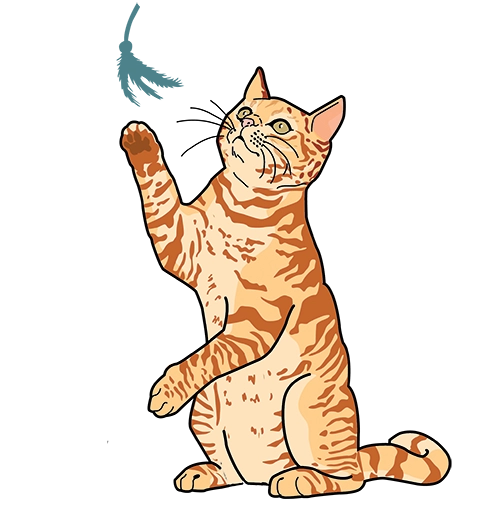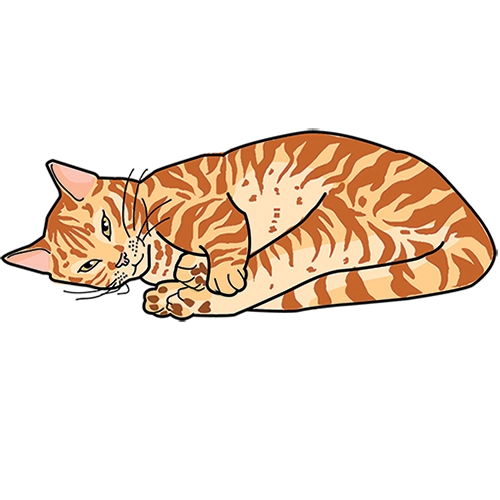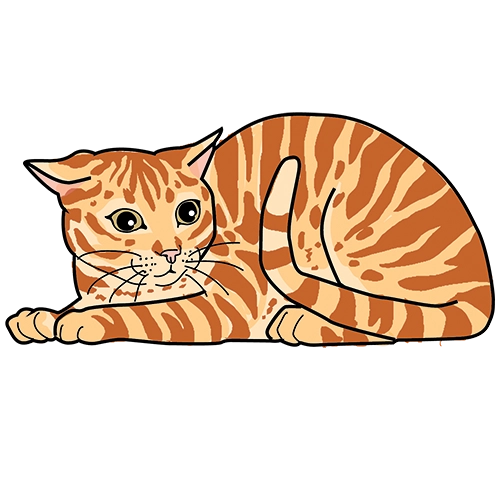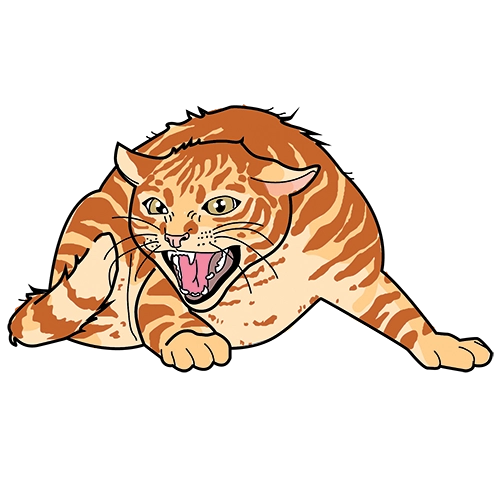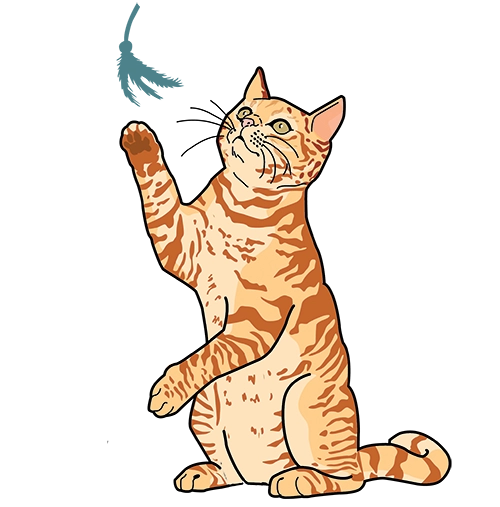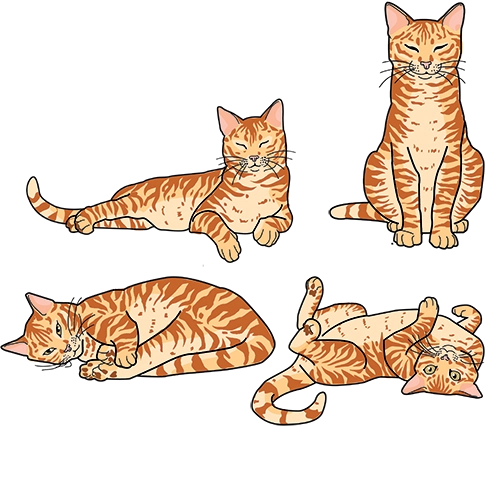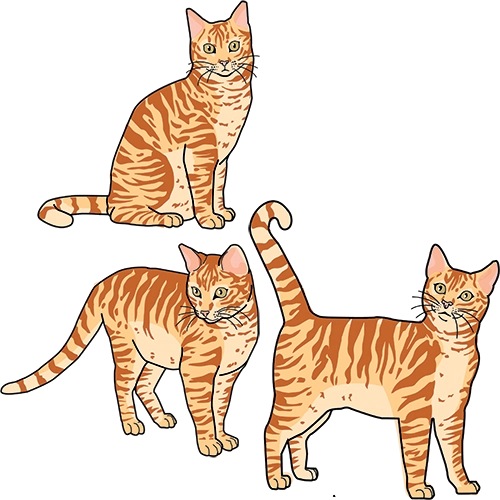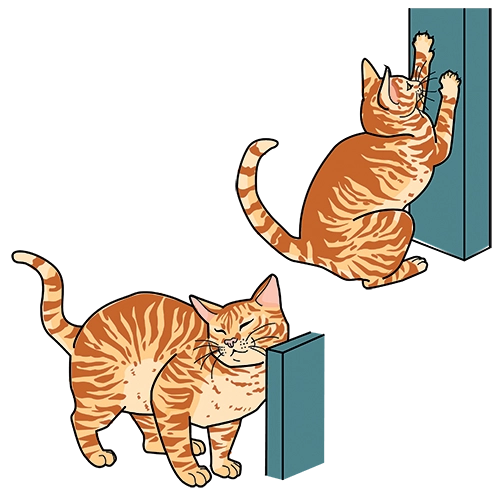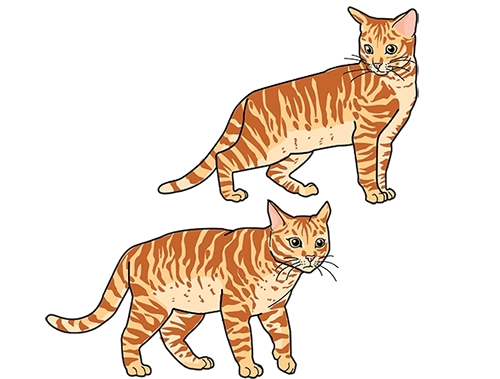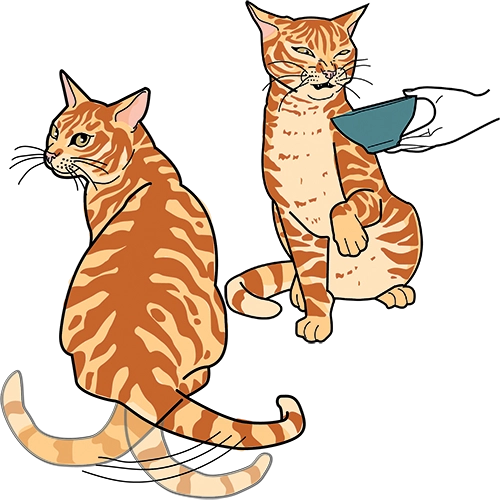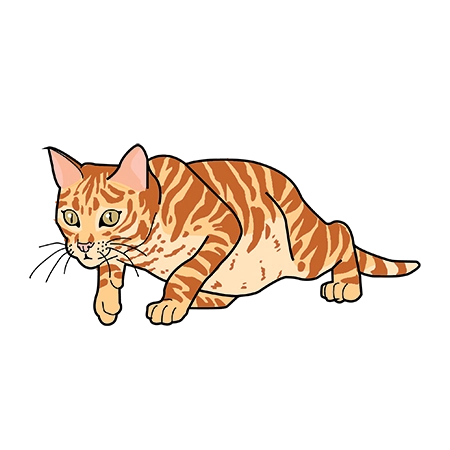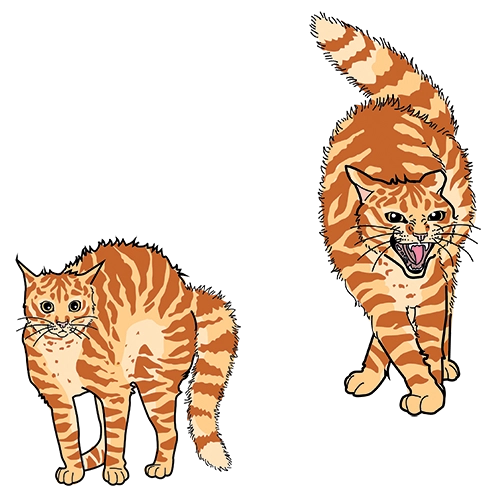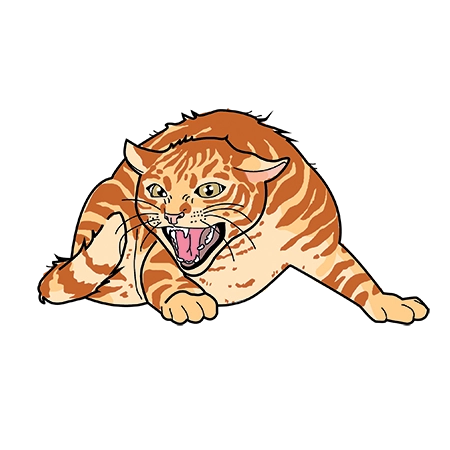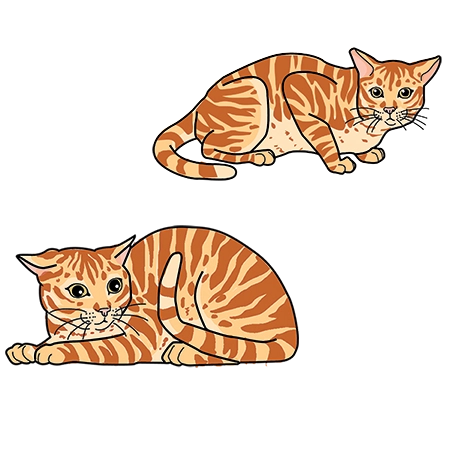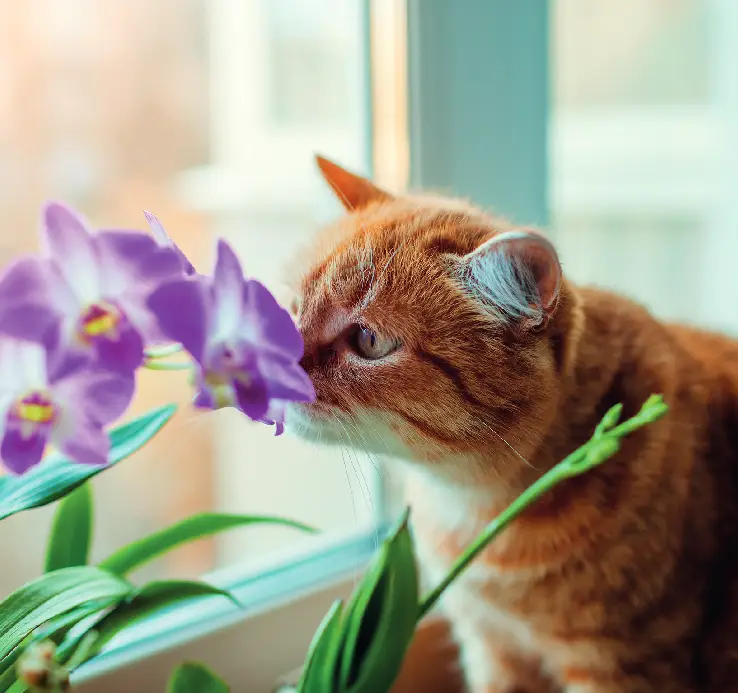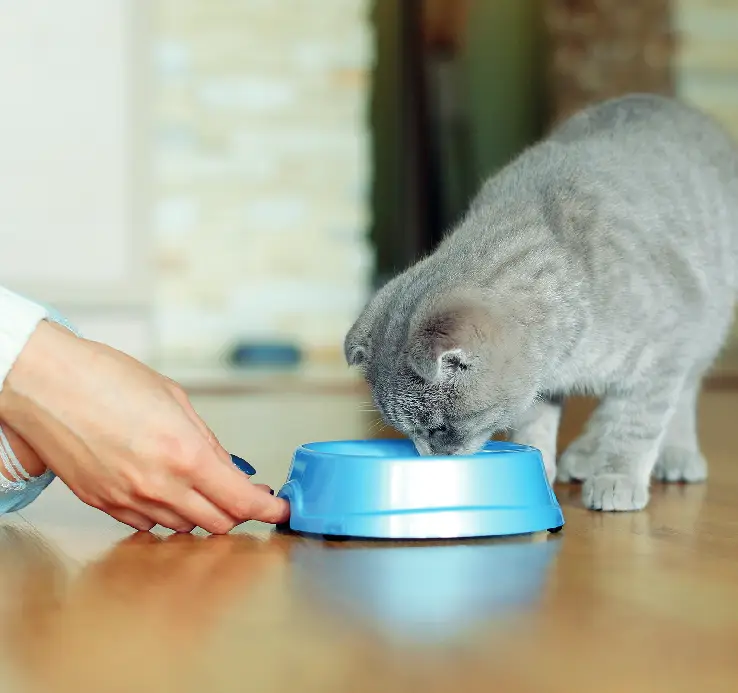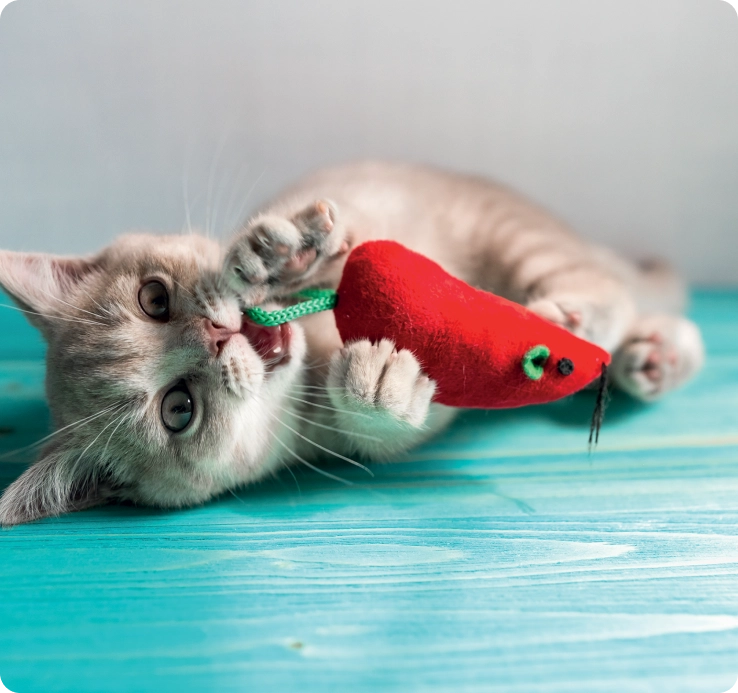It’s a 4-step guide
that helps measure and track your cat’s emotional well-being.
After the evaluation, find practical tips and nutritional solutions that will help you support and improve your cat’s emotional well-being.
Did you know?
SUFFER FROM SEPARATION ANXIETY
aggression, anxiety, marking (urinating & defaecating) around the house are caused by misunderstanding cat needs. A number of physical diseases such as urinary tract infections and high blood pressure can also lead to anxiety.
Pet parents
may have a great deal of misunderstanding over what cats actually ‘are’ and misunderstandings over what they ‘need’ to live happy, healthy lives alongside their humans.
Follow the petwag steps
by clicking on the picture that best reflects your cat
Step 1
UNDERSTANDING YOUR cat’S PERSONALITY PROFILE
Step 2
UNDERSTANDING YOUR cat’S BODY LANGUAGE
Clearly positive emotional postures
Alert, attentive and completely focused on enjoying playing a game. Common in A B.
Calm, sleepy, relaxed body posture, ears forward. Pupils of the eyes are small slits which is a clear sign that the cat is calm and relaxed. Common in A B.
Alert, attentive and interested in what is going on. Relaxed body posture, ears forward, tail up. Pupils of the eyes are small slits which is a clear sign that the cat is calm and relaxed. Common in A B.
Ambiguous emotional postures
Aroused with a focus on scratching soft surfaces like padded chairs, carpets etc. Cats scratch objects to help keep their claws sharp, but this behaviour is also an important way that cats spread their own body odour around their environment (scent marking). Cats also scent mark by rubbing their bodies up against objects, including other cats and their owners. Common alongside A B , but also seen alongside C D, indicating that the cat feels insecure, so is scent-marking its territory.
Alert, attentive, but less clear what the cat is actually feeling (compare with clearly positive emotional postures). Note here that the cat’s stature is tense, the tail is down and pupil size may be fluctuating. Can sometimes be seen in A B . More commonly seen in C D indicating that the cat feels insecure. May indicate pain.
Agitated, may be preparing to bite or scratch. Note here that the cat’s stature is tense, the tail is twitching/sweeping, and pupil size may be fluctuating. Can sometimes be seen in A B ., for example following an altercation with another cat. More commonly seen in C D indicating that the cat feels insecure. May indicate pain.
Alert and focused, the classic predatory behaviour towards a mouse, a bird, or a toy waved in front of the cat by the owner. Common in A B, but can also be seen in C D because of the cat’s tucked up, tense appearance. May indicate pain.
Clearly negative emotional postures
Super-aroused indicating fright or anger. The stature ‘puffed up’ and tense, with the fur raised to make the cat appear as large as possible. The pupils are large and black, indicating that the cat is very stressed will attack if approached. Most commonly seen in C D. May indicate pain.
Very aroused and focused, the stature is tucked up and tense, but the fur is also raised to make the cat appear as large as possible. The pupils are large and black, indicating that the cat is very stressed and may be frightened or angry, and may attack if approached. Most commonly seen in C D. May indicate pain.
Aroused and focused, the stature is tucked up and tense to make the cat appear as small as possible. Most notable, the pupils are large and black, indicating that the cat is stressed and scared. Most commonly seen in C D. May indicate pain.
Step 3
Track your cat's changing emotional state over time
Oops, it seems that you didn't fill step 1 or step 2
Select your cat's personality profile and body language to identify your cat’s emotional state.
Common body posture in cats with A B personal profiles.
Common body posture in cats with A B personal profiles.
Common body posture in cats with A B personal profiles.
In A B seen after stranger has visited etc.
InC D seen commonly, perhaps daily.
In A B seen occasionally.
In C Dseen commonly, perhaps daily.
In A B seen after visit to vet, for example.
In C Dseen commonly, perhaps daily.
In A B seen as another kind of play.
In C D predation may be mistaken for avoidance
In A B seen only in exceptional circumstances. In C D commonly seen, even daily.
In A B seen only in exceptional circumstances. In C D commonly seen, even daily.
A B seen only in exceptional circumstances. In C D commonly seen, even daily.
Step 4
UNDERSTAND YOUR cat’S ROLLING AVERAGE MOOD STATE (RAMS)
More than
+1
Brilliant, ALL of your cat’s emotional needs are being met.
Trending green
0 TO +1
Good, Most of your cat's emotional needs are being met
Trending blue
Less than
0
Be aware, your cat is at risk of developing a poor mood state
Trending grey
Follow the process
Use the wheel
Record your scores three times a day in the calendar
Each week, subtract all the negative scores from all the positive scores
After 4 weeks, calculate your cat’s Rolling Average Mood State (RAMS)
Tips
That will help you trend green
As predators, cats are very tuned in to the sights, sounds and smells around them. Cats love watching the world go by from a window, and you can stimulate their noses with herbs like catnip.
Cats are creatures of habit and they don’t like surprises! Try to keep to a daily routine around feeding times, outdoor times, cuddle times and so on.
Some sociable cats also love to play games. Soft toys on elastic strings are particularly effective as they mimic how a real prey animal might behave.
Healthy gut = Happy cat
The brain-gut axis, a complex communication, not only ensures the proper maintenance of gastrointestinal homeostasis, but is also likely to have multiple effects on motivation and higher cognitive functions. Its role is not just to monitor and integrate gut functioning but also to link the emotional and cognitive center of the brain to other internal functions and mechanisms.
The brain-gut axis, a complex communication, not only ensures the proper maintenance of gastrointestinal homeostasis, but is also likely to have multiple effects on motivation and higher cognitive functions. Its role is not just to monitor and integrate gut functioning but also to link the emotional and cognitive center of the brain to other internal functions and mechanisms.
Lallemand's innovative and proven portfolio of prebiotic, probiotic and postbiotic will help your pets immune and digestive systems naturally thrive.
How?
Supplementation with Lallemand’s microbial-based solutions is widely recommended as an efficient and positive way to shape the gut microbiota and to improve overall pet health and well-being
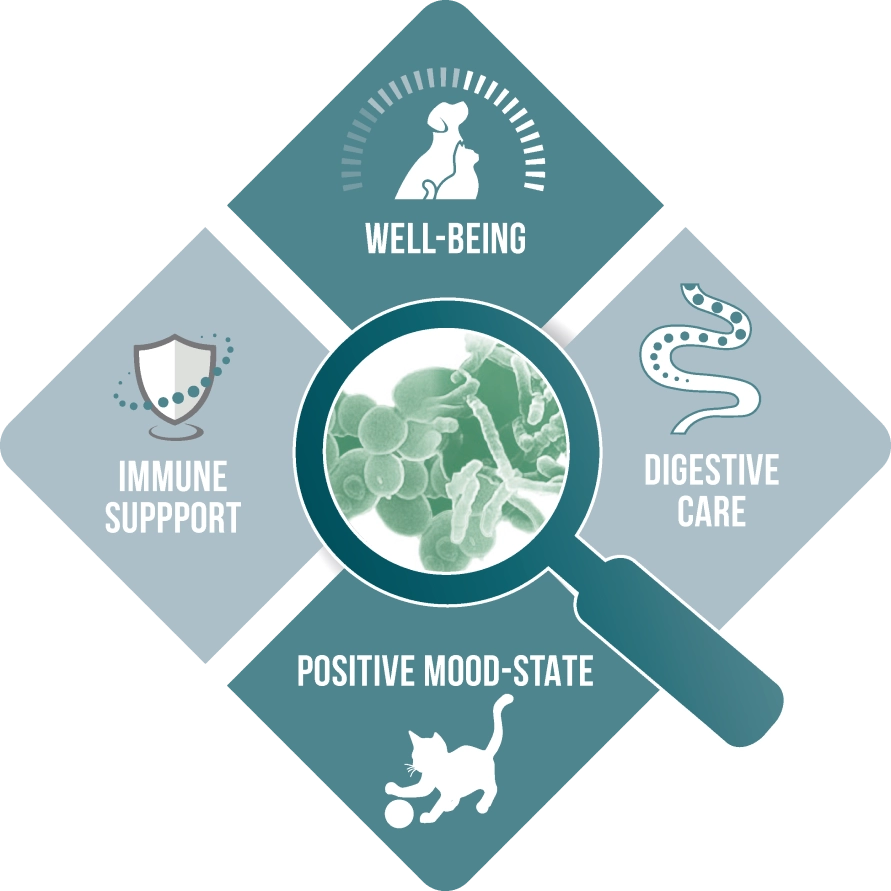
Want know more about Petwag?
